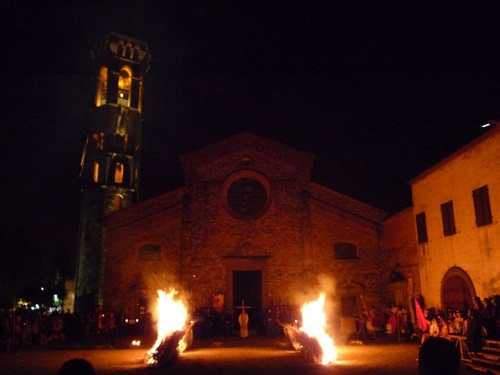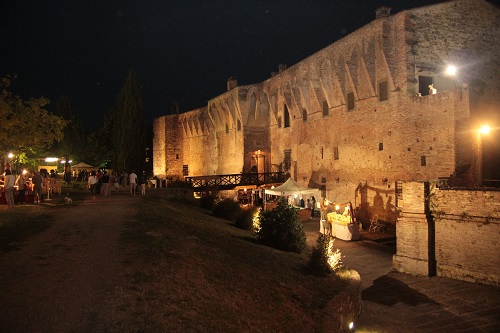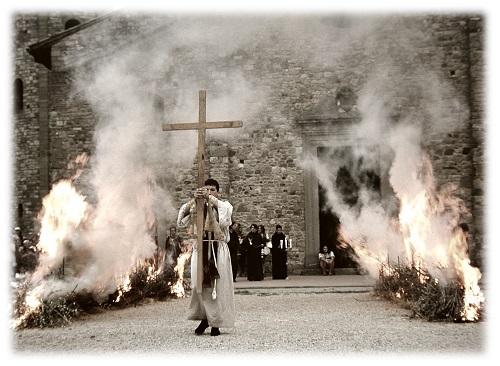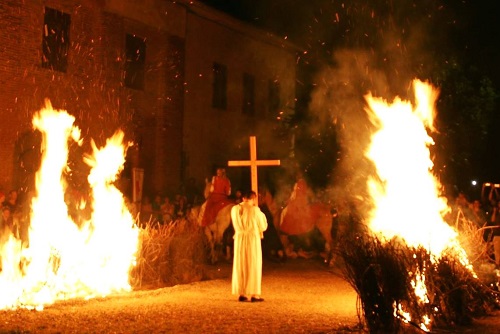Visit Florence
- Art & culture
- Tastings & Cooking Classes
- Florence Outdoor
- Day tours
- Events
- Shopping
- Hotels in Florence
Be.Curious
Destination Florence

What you will find
The Organizing Committee of the event "Igneus 1068", historical reenactment of the
Ordeal by Fire of Monk Pietro, was founded in 2000 within the Association “Amici della
Badia di Settimo” (“Friends of the Settimo Abbey”)
The spirit from which the festival originates is not only that of remembering the Ordeal by
Fire of monk Pietro, but also to recall and represent the lifestyle of medieval cities and
illustrate the history and magnificence of the glorious Abbey of San Salvatore and Lorenzo
in Settimo.
After the great fear of the year 1000, when popular belief thought that the End of the World
and the beginning of Doomsday would happen, the whole Christian world was swept by a
wind of economic and cultural renewal; Florence also, at that time a city of about 5000
inhabitants, was enlarged, embellished with superb monuments and for a short time
flourished and prospered. It receives within its walls Emperors (like Henry III) and Pontiffs
(like Niccolò II). In the year 1055, Henry III declared it a city of the Empire, but within its
walls there was discord and schism. The bishops of Florence, made strong by the
privileges granted them by the Emperor and very rich for the donations bequeathed by
various lords, mainly by the Marquis Ugo di Toscana and his mother Willa, foundress of
the Badia Fiorentina, had become superb, greedy, lustful; their wealth became a family
heritage, their offices bought and sold with gold coins.
A young monk, Giovanni Gualberto, born (probably) in 995, animated by a great spirit of
reform, violently attacked the Florentine bishop Atto, accusing him of having obtained the
chair of San Zanobi with the payment of many pounds of gold. But the time was not yet
ripe, the people raised in defence of the Bishop and Giovanni Gualberto was forced to flee,
taking sanctuary in the solitary hermitage of Vallombrosa. Here he gathered around
himself a large group of faithful and embraced the Benedictine reform (following the lines
already laid by the French Benedictines of Cluny), founding the 'order of the Vallombrosani
Benedictines. Now, Giovanni Gualberto, made strong by his vast following, supported by
San Piero Damiani, fervent apostle of the reform of the clergy, as well as by the monk
Ildebrando da Sovana, the future Pope Gregory VII, accused of simony and concubinage
the Florentine archbishop Pietro Mezzabarba da Pavia, who had succeded Bishop Atto
and, by popular acclaim, invoked the "Judgment of God", even if against the contrary
opinion of San Piero Damiani.
A humble monk of the Abbey of Settimo, Pietro, who will be, after the fire ordeal, named
Abbot of the convent of Fucecchio and then cardinal and bishop of Albano and will go
down in history as San Pietro Igneo, on February 13, 1068 passed unharmed between two
burning piles of wood. People claimed it was a miracle, Bishop Pietro Mezzabarba was
deposed, Giovanni Gualberto triumphed and continued his work as a great reformer. He
will die, in odour of sanctity, in the monastery of Passignano nel Chianti on 12 July 1073.
This "Ordeal by Fire of the monk Pietro" is the event re-enacted and commemorated
during the days of the medieval celebrations.
On Sunday evening, a procession of soldiers, nobles and prelates, including Bishop
Mezzabarba, parades through the streets of the town, recalling the influx of people that the
event provoked. Arrived in the square in front of the church, the actors playing the monks
of the Abbey leave the central door of the church to the sound of Gregorian chants. After
the prayer of S. Giovanni Gualberto and of the future S. Pietro Igneo, the stacks of wood
placed on the square are lit and the actor passes between them. The nobles bring the
victorious monk into the church, while the soldiers arrest the bishop Mezzabarba,
concluding the re-enactment.
The re-enactment refers to a precise historical period; we know even the exact day on
which the event to be commemorated took place: for this reason the clothes of the nobles,
produced by the seamstresses of the town, are as close as possible to the historical period
evoked.
Where / Meeting point
Via S. Lorenzo a Settimo 19 - 50018 Scandicci (FI)











 All the services are provided by local merchants
All the services are provided by local merchants By using this site you support Florence
By using this site you support Florence We offer products with high-quality standards
We offer products with high-quality standards You stay sustainable
You stay sustainable It's a 100% trustworthy website
It's a 100% trustworthy website